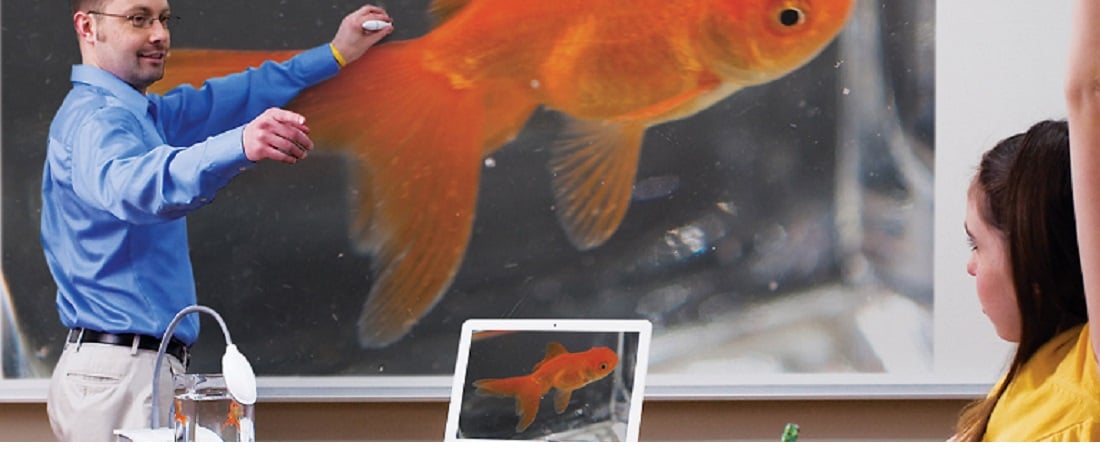
Schools that have reopened are fastidiously following local health and safety guidelines, including physical distancing of student desks. This can hamper some common instructional practices that help students understand new concepts such as sharing math manipulatives or working as teams on science activities. Teachers need to adapt to different ways of facilitating lessons and document cameras have proven to be an easy-to-use tool for doing so.
A document camera is a valuable teaching tool, especially if close interaction is limited. They sit on a table, and has a flexible neck pointed down at a document, image, or object. Some doc cameras, such as the MimioView™, allow teachers to annotate images and create files to be used as handouts or shared with students who missed the lesson/class. This is especially helpful with schools that are implementing hybrid learning (students learn part time in-class and part time online). How else can a document camera boost student engagement? Check out these tips below:
- Model letter and number formation for younger students. Use lined paper or student worksheets and model each stroke as students follow along.
- Display pages of a book, short text, or poems. Every book can be a “big book” for teacher or student read-alouds, to identify elements of a story, or make predictions.
- Edit and revise a writing sample. Go through each stage of a writing project from brainstorming to comparing the final draft with a scoring rubric. Annotations can be saved and used as review for the next lesson.
- Review homework assignments with students. Mark up questions that need special attention and record exceptional student explanations to serve as models for future assignments.
- Project images and maps. Use images of the earth from space to identify changes in land formations due to earthquakes and erosion. Study maps to understand and discuss topography.
- Demonstrate maths concepts and skills. Use graph paper for multiplication or area, pattern blocks for tessellations, maths manipulatives for counting and computation, or number cubes for probability.
- Magnify objects and samples for science. Examine parts of an animal or plant cell, study attributes of living things such as earthworms, flowers, or insects, and differentiate between various types of rock. Instead of using a flat image of a plant, use a real plant to study its root system and understand photosynthesis.
- Use for student presentations. For any topic learned, encourage students to share their understanding through presentations. They can project charts, infographics, objects, and more while explaining key points.
These are just some of the ways a document camera can be used for instruction. It is versatile and can be used for any subject or purpose (some teachers have even used their doc camera to project the class timer!). Use it with innovative annotation software and its value grows as more can be done to enhance interactivity with students. If you haven’t considered this simple-to-use tool in the past, maybe it’s time.
Please comment and share how you've used a document camera with your class!
For more on Boxlight ed tech solutions that enhance student engagement and class collaboration, go to boxlight.com.